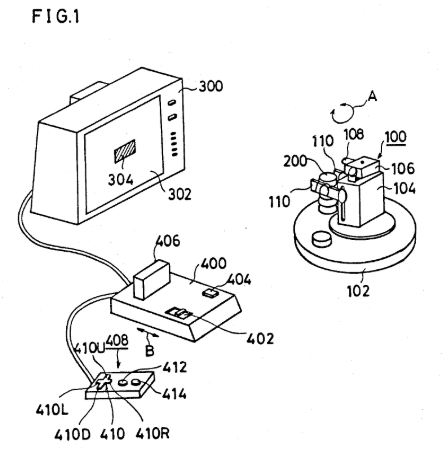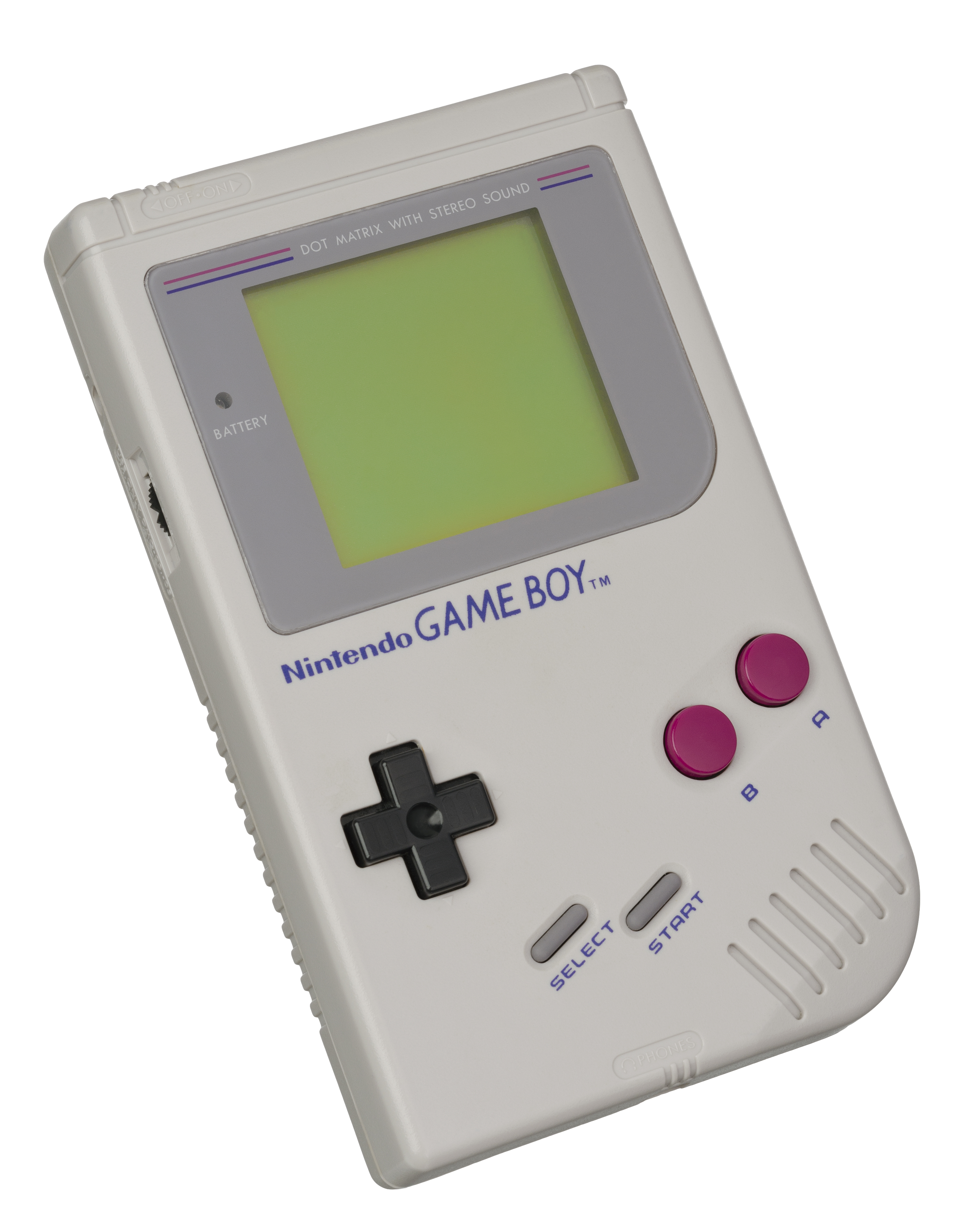|
Robotic Operating Buddy
R.O.B. (Robotic Operating Buddy) is a toy robot accessory for the Nintendo Entertainment System (NES). It was launched in July 1985 as the in Japan, and October 1985 as R.O.B. in North America. Its short lifespan yielded only two games in the ''Robot Series'': ''Gyromite'' and ''Stack-Up''. Following the video game crash of 1983, Nintendo alleviated the fearful retail market by rebranding its Japanese Famicom video game console as the Nintendo Entertainment System—a new platform focused on R.O.B. to further reclassify the system as a uniquely sophisticated toy experience instead of simply as a video game console. ''Computer Entertainer'' magazine in June 1985 called R.O.B. "the world's only interactive robot". The NES's extensive marketing plan, with its immediately successful centering on R.O.B., began with the October 1985 test market launch of the NES in Manhattan, New York. The launch was Nintendo's debut in the North American video game console market, which eventually ... [...More Info...] [...Related Items...] OR: [Wikipedia] [Google] [Baidu] |
Nintendo Entertainment System
The Nintendo Entertainment System (NES) is an 8-bit third-generation home video game console produced by Nintendo. It was first released in Japan in 1983 as the commonly known as the The NES, a redesigned version, was released in American test markets on October 18, 1985, before becoming widely available in North America and other countries. After developing a series of successful arcade games in the early 1980s, Nintendo planned to create a home video game console. Rejecting more complex proposals, the Nintendo president Hiroshi Yamauchi called for a simple, cheap console that ran games stored on cartridges. The controller design was reused from Nintendo's portable Game & Watch games. Nintendo released several add-ons, such as a light gun for shooting games. The NES was one of the best-selling consoles of its time and helped revitalize the US game industry following the video game crash of 1983. It introduced a now-standard business model of licensing third-part ... [...More Info...] [...Related Items...] OR: [Wikipedia] [Google] [Baidu] |
Shovelware
Shovelware is a term for individual video games or software bundles known more for the quantity of what is included than for the quality or usefulness. The metaphor implies that the creators showed little care for the quality of the original software, as if the new compilation or version had been created by indiscriminately adding titles "by the shovel" in the same way someone would shovel bulk material into a pile. The term "shovelware" is coined by semantic analogy to phrases like shareware and freeware, which describe methods of software distribution. It first appeared in the early 1990s when large amounts of shareware demo programs were copied onto CD-ROMs and advertised in magazines or sold at computer flea markets. Shovelware CD-ROMs ''Computer Gaming World'' wrote in 1990 that for "those who do not wish to wait for "software that used the new CD-ROM format, The Software Toolworks and Access Software planned to release "game packs of several classic titles". By 1993 the ... [...More Info...] [...Related Items...] OR: [Wikipedia] [Google] [Baidu] |
Rock 'em Sock 'em Robots
''Rock 'Em Sock 'Em Robots'' is a two-player action toy and game designed by Marvin Glass and Associates and was first manufactured by the Louis Marx and Company, Marx toy company in 1964. It features two dueling robot boxing, boxers, Red Rocker and Blue Bomber, mechanically manipulated by the players, and the game is won when one player knocks the head off of the opponent. The 2000s version of the game by Mattel features physically smaller robots. A film based on the game has been announced to be in development by Universal Pictures. Rules Each player takes control of one of the two robots: Red Rocker and Blue Bomber, both of which are standing on a platform molded in bright yellow high-impact polystyrene plastic, representing a boxing ring. By pushing plunger buttons on a pair of joysticks at the base of the platform, players make their robot punch at their opponent's robot. If a robot's head is hit with sufficient force at a suitable angle, the head will overextend away from ... [...More Info...] [...Related Items...] OR: [Wikipedia] [Google] [Baidu] |
Gail Tilden
Gail Tilden is an American marketing manager and consultant. She formerly worked at Nintendo of America where she was instrumental in helping with the advertising of the Nintendo Entertainment System's introduction to the North American market, and establishing the ''Nintendo Power'' magazine. Career Nintendo Tilden joined Nintendo of America (NoA) in July 1983 and by September was named the Advertising Manager for the company. At this time, Nintendo was primarily focused on arcade games though had just released its first home console, the Famicom, in Japan. Within the United States, the video game market had just crashed, in part due to oversaturation of the market by unlicensed third-party games for the home consoles of the time. Nintendo waited for some time to bring the Famicom into the United States, and sought to position it to avoid the pitfalls that had led to the 1983 crash. Tilden was part of the team to figure out how to bring the system to U.S. to appeal to consumers ... [...More Info...] [...Related Items...] OR: [Wikipedia] [Google] [Baidu] |
Howard Phillips (consultant)
Howard Phillips is an American video game consultant and producer best known as an early employee of and spokesman for Nintendo of America in the 1980s. Initially a boat painter, Phillips started his video game career as manager of Nintendo of America's first Tukwila warehouse in 1981. He managed relations with the retail sites of the 1985 test launch of the Nintendo Entertainment System, gaining insight into which games were popular. Because of his gameplay aptitude and formative experience in Nintendo's then-nascent expansion in North America, his roles grew to spokesperson, manager of the Game Counselor hotline, and co-editor of ''Nintendo Power'' magazine. After leaving Nintendo in 1991, his video game work included Microsoft, Chair Entertainment, and GameDuell. Early life Howard Phillips was raised to make his own fun, saying "we weren't poor, but back then parents didn't bury kids in toys ... so we were constantly making things to play with, on, in, or around." With indus ... [...More Info...] [...Related Items...] OR: [Wikipedia] [Google] [Baidu] |
The Milwaukee Journal
The ''Milwaukee Journal Sentinel'' is a daily morning broadsheet printed in Milwaukee, Wisconsin, where it is the primary newspaper. It is also the largest newspaper in the state of Wisconsin, where it is widely distributed. It is currently owned by the Gannett Company.Gannett Completes Acquisition of Journal Media Group . ''USA Today'', April 11, 2016. In early 2003, the ''Milwaukee Journal Sentinel'' began printing operations at a new printing facility in West Milwaukee. In September 2006, the ''Journal Sentinel'' announced it had "signed a five-year agreement to print the national edition of '' |
Gunpei Yokoi
, sometimes transliterated Gumpei Yokoi, was a Japanese video game designer. He was a long-time Nintendo employee, best known as creator of the Game & Watch handheld system, inventor of the cross-shaped Control Pad, the original designer of the Game Boy, and producer of a few long-running and critically acclaimed video game franchises such as '' Metroid'' and '' Kid Icarus''. Career Yokoi graduated from Doshisha University with a degree in electronics. He was first hired by Nintendo in 1965 to maintain the assembly-line machines used to manufacture its hanafuda cards. In 1966, Hiroshi Yamauchi, president of Nintendo at the time, came to a hanafuda factory where Yokoi was working and took notice of a toy, an extending arm that Yokoi made for his own amusement during spare time while doing maintenance. Yamauchi ordered Yokoi to develop it as a proper product for the Christmas rush. The Ultra Hand was a huge success, and Yokoi was asked to work on other Nintendo toys, includ ... [...More Info...] [...Related Items...] OR: [Wikipedia] [Google] [Baidu] |
R2-D2
R2-D2 () or Artoo-Detoo is a fictional robot character in the ''Star Wars'' franchise created by George Lucas. He has appeared in ten of the eleven theatrical ''Star Wars'' films to date. At various points throughout the course of the films, R2, an astromech droid, is a friend to C-3PO, Padmé Amidala, Anakin Skywalker, Leia Organa, Luke Skywalker, and Obi-Wan Kenobi. R2-D2 and his companion C-3PO are the only characters to appear in every theatrical ''Star Wars'' film, with the exception of '' Solo: A Star Wars Story'' (2018). English actor Kenny Baker played R2-D2 in all three original ''Star Wars'' films and received billing credit for the character in the prequel trilogy, where Baker's role was reduced as R2-D2 was portrayed mainly by radio controlled props and CGI models. In the sequel trilogy, Baker was credited as consultant for ''The Force Awakens''; however, Jimmy Vee also co-performed the character in some scenes. Vee later took over the role beginning in ''The Last ... [...More Info...] [...Related Items...] OR: [Wikipedia] [Google] [Baidu] |
Videophile
A videophile (literally, "one who loves sight") is one who is concerned with achieving high-quality results in the recording and playback of movies, TV programs, etc. Criteria Similar to audiophile values, videophile values may be applied at all stages of the chain: the initial audio-visual recording, the video production process, and the playback (usually in a home setting). Some of the aspects of video that most videophiles are concerned with include frame rate, color system, resolution, compression artifacts, motion artifacts, video noise, screen size, etc. Origin The term "videophile" was popularised, if not coined, by Tallahassee, Florida-based attorney and writer Jim Lowe, editor and publisher of ''The Videophile's Newsletter'', the first issue of which appeared in the summer of 1976. This was the first publication to unite fans of the Sony Betamax home video recorder (and later VHS, introduced in 1977). The newsletter later became ''The Videophile'', a nationally distribu ... [...More Info...] [...Related Items...] OR: [Wikipedia] [Google] [Baidu] |
Design Language
A design language or design vocabulary is an overarching scheme or style that guides the design of a complement of products or architectural settings, creating a coherent design system for styling. Objectives Designers wishing to give their suite of products a unique but consistent appearance and user interface can define a specification for it. The specification can describe choices for design aspects such as materials, color schemes, shapes, patterns, textures, or layouts. They then follow the scheme in the design of each object in the suite. Usually, design languages are not rigorously defined; the designer basically makes one thing in a similar manner as another. In other cases, they are followed strictly, so that the products gain a strong thematic quality. For example, although there is a great variety of unusual chess set designs, the pieces within a set are usually thematically consistent. Sometimes, designers encourage others to follow their design languages when dec ... [...More Info...] [...Related Items...] OR: [Wikipedia] [Google] [Baidu] |
Industrial Design
Industrial design is a process of design applied to physical products that are to be manufactured by mass production. It is the creative act of determining and defining a product's form and features, which takes place in advance of the manufacture or production of the product. It consists purely of repeated, often automated, replication, while craft-based design is a process or approach in which the form of the product is determined by the product's creator largely concurrent with the act of its production. All manufactured products are the result of a design process, but the nature of this process can vary. It can be conducted by an individual or a team, and such a team could include people with varied expertise (e.g. designers, engineers, business experts, etc.). It can emphasize intuitive creativity or calculated scientific decision-making, and often emphasizes a mix of both. It can be influenced by factors as varied as materials, production processes, business strateg ... [...More Info...] [...Related Items...] OR: [Wikipedia] [Google] [Baidu] |
Consumer Electronics Show
CES (; formerly an initialism for Consumer Electronics Show) is an annual trade show organized by the Consumer Technology Association (CTA). Held in January at the Las Vegas Convention Center in Winchester, Nevada, United States, the event typically hosts presentations of new products and technologies in the consumer electronics industry. History The first CES was held in June 1967 in New York City. It was a spinoff from the Chicago Music Show, which, until then, had served as the main event for exhibiting consumer electronics. The event had 17,500 attenders and over 100 exhibitors; the kickoff speaker was Motorola chairman Bob Galvin. From 1978 to 1994, CES was held twice each year: once in January in Las Vegas known for ''Winter Consumer Electronics Show (WCES)'' and once in June in Chicago, known as ''Summer Consumer Electronics Show (SCES)''. The winter show was successfully held in Las Vegas in 1995 as planned. However, since the summer Chicago shows were beginning ... [...More Info...] [...Related Items...] OR: [Wikipedia] [Google] [Baidu] |






